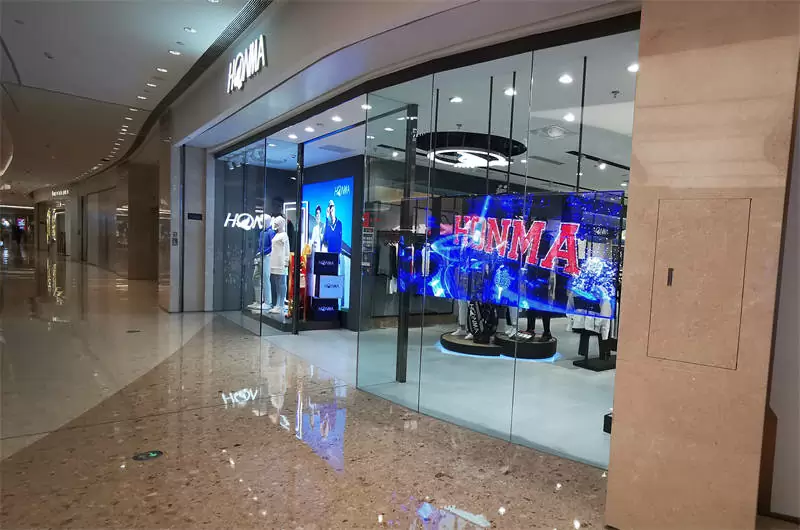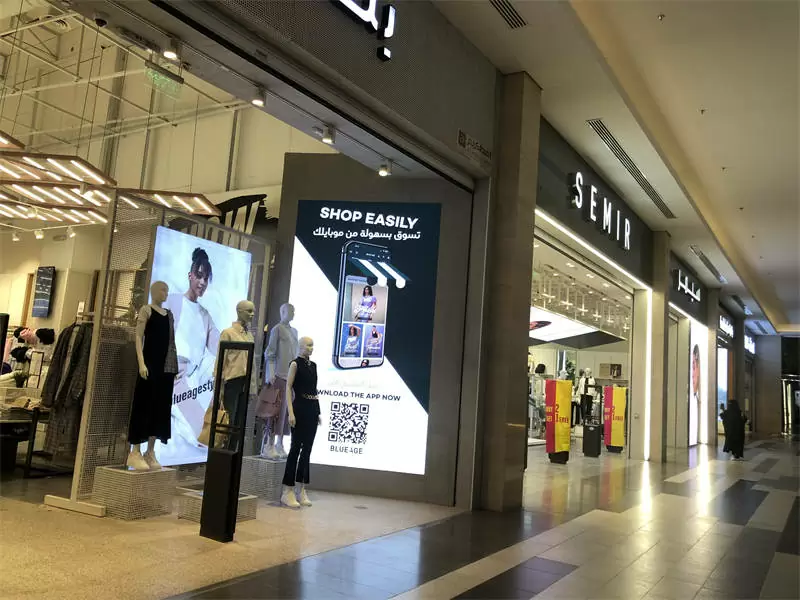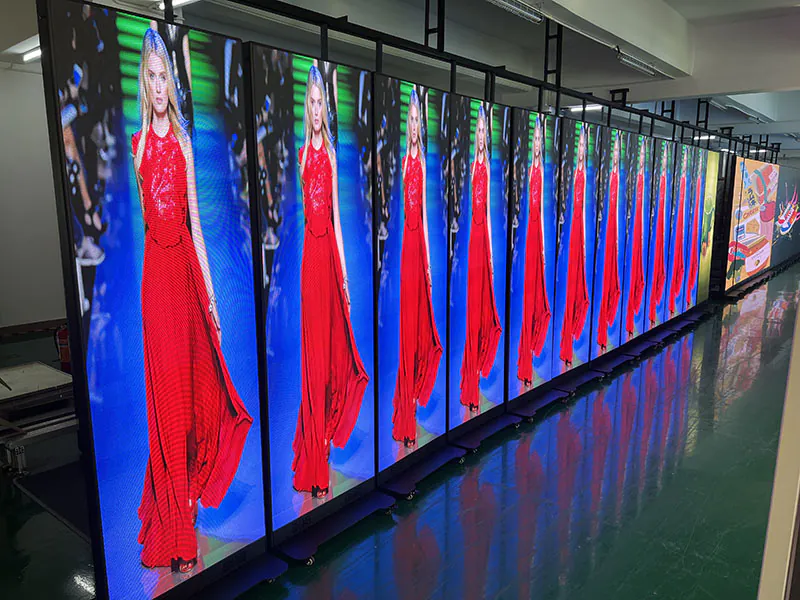Transparent LED displays are gaining popularity across various industries. Whether for retail stores, shopping malls, corporate offices, or outdoor installations, these displays offer a modern and dynamic way to present content. However, selecting the right transparent LED display for your needs can be tricky. You need to consider some factors. Let’s talk the detail to help you make the best choice.
Table of Contents
ToggleConsiderations for choosing transparent LED screens
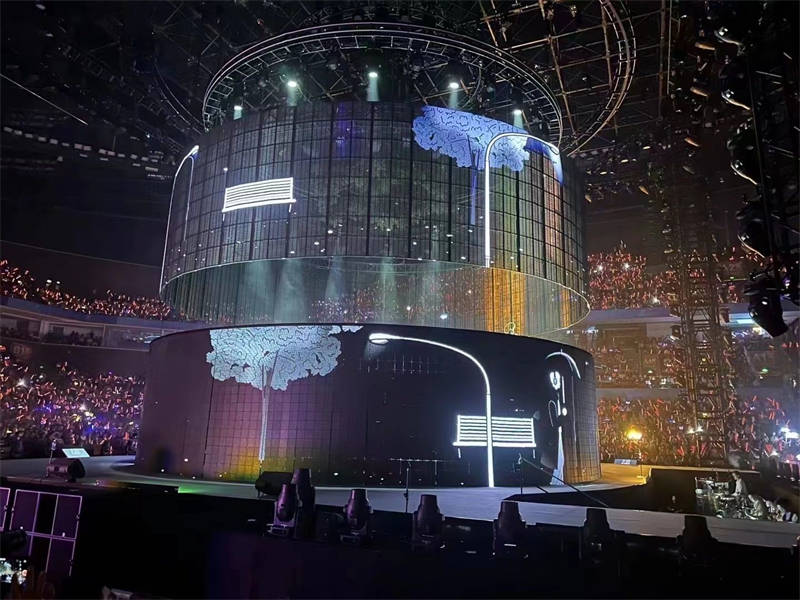
Where Will You Install the Transparent Screen?
The first step in choosing the right transparent LED display is deciding where it will be installed. The installation environment plays a key role in determining the type of screen you’ll need. Transparent LED displays are flexible in terms of placement, but you want to ensure that your choice fits the specific location.
Indoor Installation: Retail Stores and Shopping Malls
For indoor installations, such as in retail shops or shopping malls, standard-sized transparent LED panels work well. These screens are usually mounted on glass walls or within shop windows. They provide high-definition images while maintaining transparency, allowing people to see through the screen. This is perfect for applications where you want to attract passersby while still showcasing products inside the store.
Outdoor Installation: Building Facades
For outdoor installations, where high brightness is crucial to withstand direct sunlight, you’ll need an outdoor transparent LED screen. These screens are often fixed on building facades to play clear advertisements that are visible from long distances. Outdoor screens require higher durability and weather resistance, but they still offer excellent transparency, making them an appealing choice for businesses wanting to maintain the aesthetic of their buildings.
Large-Scale Installations: Media Facades
If you’re planning to cover a large area, like a building facade or media tower, an ultra-high transparency media mesh is a great option. These screens come in various models for different uses, including day and night viewing. They are perfect for creating dynamic, large-format visuals that can be seen from afar.
Free-Standing Displays
If your screen needs to stand on the ground, consider using a transparent LED poster. These displays are highly customizable and can even be made double-sided to provide visuals on both sides. They are ideal for entrances, exhibitions, or any space where a standing display is needed.
Custom Shapes for Creative Designs
For designers with creative projects or unique building structures, transparent LED screens can be fully customized. They can adapt to any shape or size, making them ideal for projects that require a creative touch. This is particularly useful in architecture, events, and exhibitions .
How Much Brightness Does the Screen Need?

Depending on where the display will be placed and how it will be used, the brightness level can vary significantly. Brightness is measured in nits, and higher nits are required for screens exposed to direct sunlight.
Indoor Brightness Requirements
For indoor use, such as in retail shops or malls, brightness around 1000 nits is usually sufficient. This ensures the screen is visible without overpowering the surrounding environment. However, if the screen faces the street, or is placed behind a glass window, higher brightness—around 4500 nits—might be necessary. This will ensure the display remains vibrant and clear even when viewed from outside during the day.
Outdoor Brightness Requirements
Outdoor displays, particularly those in direct sunlight, need much higher brightness. For outdoor screens, aim for at least 8000 nits to ensure visibility in bright daylight. On the other hand, if your display is for nighttime use, a lower brightness level—around 1000 nits—is typically sufficient. Screens used only during the evening or in shaded environments don’t need as much light to deliver crisp visuals.
What Resolution Do You Need?
The resolution is determined by the pixel pitch, which refers to the distance between each LED on the screen. The smaller the pixel pitch, the higher the resolution and image clarity.
What Type of Content Will You Display?
First, consider the type of content you plan to show. If you’re displaying high-definition videos or detailed images, you’ll need a screen with a smaller pixel pitch for a higher resolution. On the other hand, if the content is simple—such as basic color changes, animations, or text—a larger pixel pitch might suffice. Simpler content doesn’t require the same level of detail, which means you can save on cost by choosing a lower resolution screen.
How Far Will Viewers Be?
The viewing distance also plays a key role in deciding the appropriate resolution. The closer viewers are to the screen, the smaller the pixel pitch needs to be. For viewing distances of less than 5 meters, a pixel pitch of 2.8mm to 3.9mm is ideal. This ensures that the screen remains clear and sharp even when viewed up close.
For medium distances—up to 10 meters—a pixel pitch between 3.9mm and 10.4mm works well. If viewers will be more than 50 meters away, larger pixel pitches, such as 15.6mm or even 37mm, will suffice. Larger pixel pitch screens are generally less expensive and still deliver good visual impact when viewed from a distance.
What’s Your Budget?
Finally, your budget will influence your decision. Transparent LED displays come in various price ranges, and smaller pixel pitches or higher brightness models will naturally cost more.
Higher Costs for High-Resolution and Brightness
If you need high-definition resolution and high brightness for daytime viewing, you can expect to pay more. These screens are perfect for high-end applications, such as flagship retail stores, airports, or luxury shopping malls, where image quality is paramount. Though they are more expensive, the investment often pays off in increased visibility and customer engagement.
Budget-Friendly Options for Larger Screens
For larger-scale installations where viewers are farther away, you can choose a larger pixel pitch and lower resolution LED screen. These displays still offer impressive visuals but come at a lower cost. Large media facades,
By assessing these key areas, you’ll be able to select a transparent LED display. But do you know how to judge the quality of a transparent LED screen?
7 Factors to Tell You How to Judge Whether the Transparent LED Screen is Good or Bad
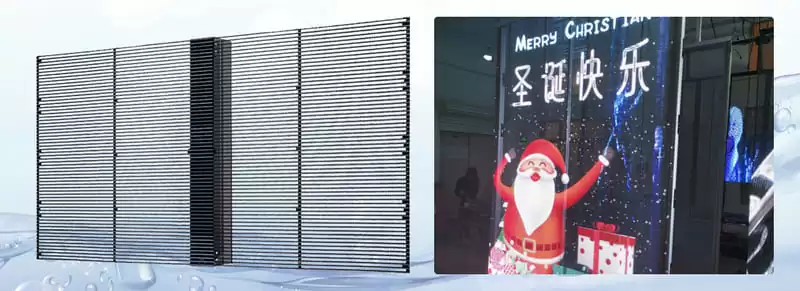
Many transparent LED screens look the same, and their structure, including circuit boards, LED lights, and wiring, is often similar. So, how do you judge whether a transparent LED screen is good or bad? Here are seven key factors to help you make the right choice.
Brightness Comparison
Brightness is one of the first things to check when evaluating a transparent LED screen. Here’s a simple method: Place an acrylic panel over the screen modules and slowly lift it. As you do this, observe the brightness of the LED lights. Does it meet your expectations? The brighter the screen, the higher the quality of the LED lights. And yes, brighter screens are usually more expensive.
For indoor environments, lower brightness is fine. But for outdoor applications like shop windows or glass walls, you’ll need a high-brightness LED screen to ensure visibility, especially during the day.
Are the LED Lights Evenly Lit?
Brightness isn’t everything. You also need to check if the LED lights are evenly lit. This is especially important when displaying white light. Uneven lighting or color differences between the LED lights, known as color variation, can seriously affect the quality of the screen.
To test this, use an acrylic panel of sufficient thickness and place it over the screen. This will help you notice any inconsistencies in light distribution. Color variation is one of the most important factors in determining the screen’s quality. It’s also a major reason why some transparent LED screens are more expensive than others.
Checking the Wiring
Wiring quality can make or break an LED screen. Many LED display manufacturers claim their wires are of high quality, often pointing to certifications like UL approval. However, the most reliable way to check is by inspecting the wires yourself.
Peel back the outer coating of the wires and count the number of cores inside. Transparent LED screens with 15, 17, or 20-core wires will generally perform better than those with fewer cores, such as 11 or 14. The more cores, the better the wiring quality—and the more reliable the screen.
LED Light Temperature
After the screen has been on for a while, touch the LED lights. Do they feel hot? If they’re too hot to touch, this could indicate a problem. High temperatures affect the stability of the LED lights, leading to faster degradation over time.
LED screens that remain cool after prolonged use are generally of higher quality. These screens are less likely to face performance issues and will last longer. A screen that gets too hot is a sign of poor design or low-quality components.
Solder Joint Quality
Next, take a look at the solder joints. Well-made joints should be full and clean. Poor-quality soldering can lead to unstable connections, which will cause flickering or even complete failure in parts of the screen.
If the solder joints look sloppy or incomplete, this could indicate low-quality assembly. These kinds of defects can cause headaches later on, with frequent repairs or replacements needed. A screen with good soldering, however, will have better brightness and overall reliability.
LED Mounting Method
There are two main ways to mount the LED lights on a transparent screen: front-mounted and side-mounted. Both methods have their pros and cons.
Front-Mounted LEDs: This is the traditional method used in most LED displays. It’s reliable and has been tested by the market for years. The front-mounted lights offer stable performance and are widely considered the better option.
Side-Mounted LEDs: Side-mounted LEDs offer higher transparency, which makes the screen more see-through. However, this technology is relatively new, and its long-term reliability is still being tested. If you prioritize transparency, side-mounted LEDs might be for you. But if you want a proven, stable solution, front-mounted LEDs are the safer choice.
PCB Board Thickness
Finally, consider the thickness of the PCB (printed circuit board). While thicker boards provide better durability, they can also reduce the transparency of the screen. A thicker PCB can block more light, making the screen less see-through.
For front-mounted LED displays, a thinner PCB board is generally preferred, as it allows for better transparency without sacrificing performance. However, you need to balance this with the need for durability, especially in outdoor installations.
Above we have introduced some common methods to judge the conventional transparent LED screen. If you are an end user, why not consider our 3D transparent invisible holographic screen?
SightLED’s Holographic LED Invisible Screen
SightLED’s holographic LED invisible screen pushes the boundaries of LED display technology. It offers an unmatched viewing experience that outperforms traditional transparent LED screens. Here are the key features that set it apart.
Keel-Free Design for Ultimate Transparency
Unlike conventional transparent LED screens that rely on visible keel supports, SightLED’s holographic LED screen uses a revolutionary keel-free design. It achieves an incredible level of transparency. With models like P3.91 and P6.25, you get up to 80% and 90% transparency respectively. The screen blends seamlessly with its surroundings, giving a stunning “invisible” effect.
Ultra-Thin and Lightweight, Perfect for Creative Installations
The screen is less than 2MM thick and weighs only 6KG per square meter. This lightweight design allows it to be flexible and adaptable. You can even cut it to fit complex installation environments. It sticks to transparent glass using a special adhesive, making it perfect for creative applications in various spaces.
Independent Driving IC for Superior Visuals
SightLED’s proprietary independent driving IC enhances control over each LED light. This leads to a remarkable 16-bit grayscale level, resulting in vibrant and lifelike colors. The pixel density of this screen surpasses most similar products. Whether viewed up close or from afar, the display remains crystal clear, delivering high-definition and high-brightness visuals.
Immersive 3D Effect
The screen’s transparency combined with its LED technology creates an immersive 3D Display Screen experience. The screen integrates the objects in front and behind it, resulting in a floating visual effect. This makes the display appear as if it’s suspended in mid-air, giving viewers a unique and engaging experience like never before.
Easy Installation and Low Maintenance
Installation is straightforward, even for beginners. The screen is designed in modular units. So you can assemble fast and easily. Additionally, each LED is controlled independently, so if one light fails, the others remain unaffected.
Personalized Customization to Fit Any Space
SightLED offers two ordering options: a ready-made integrated advertising machine or a fully customized solution. The advertising display is portable and perfect for temporary settings like exhibitions or stage events. For those needing a unique solution, you can choose our custom mode.
Related:
How Much Does Transparent LED Holographic Invisible Screen Cost
Conclusion:
Evaluating the quality of a transparent LED screen involves more than just checking its appearance. By focusing on these seven factors, you can better assess whether a screen is worth your investment. SightLED’s holographic LED invisible screen offers stunning transparency, lightweight flexibility, superior display quality, and customizable designs. Whether you need a regular transparent LED screen or a 3D transparent holographic screen. We can meet your needs. If you are interested, please feel free to contact us.

